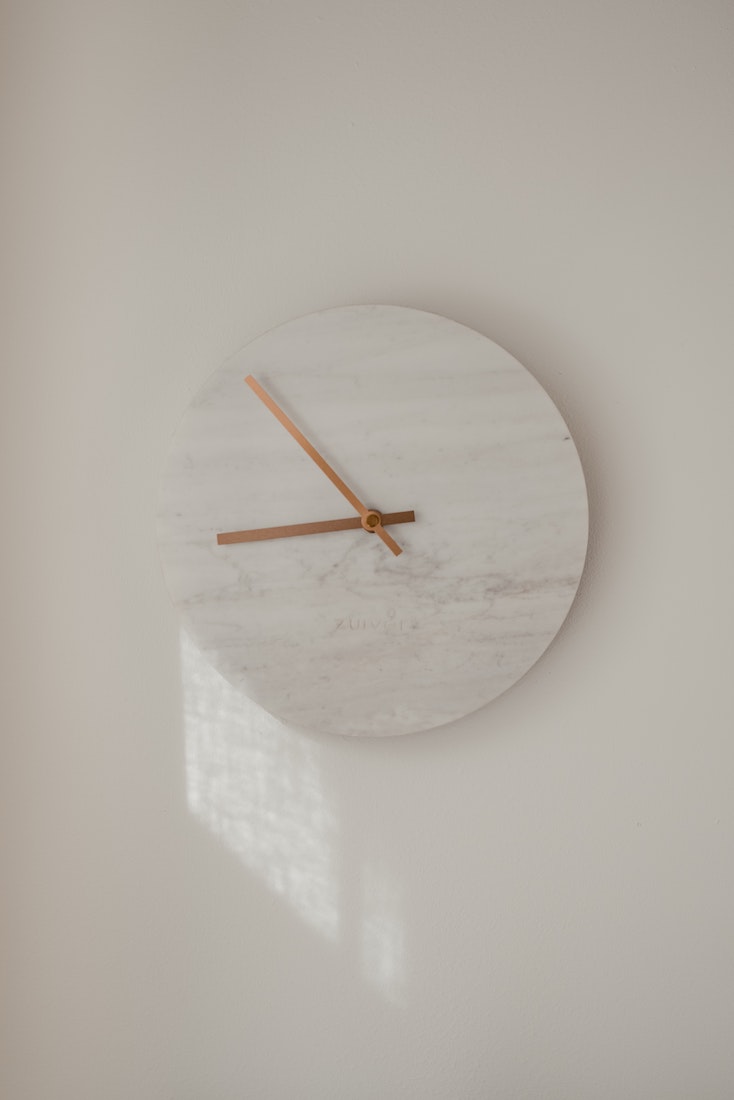
The Art of Deep Work: Creating a Sacred Workspace
You receive a text and your phone buzzes. A cheerful ding! signals the arrival of a new email. The point of technology is to make life easier, more convenient and hassle-free. So how come we’re busier, and more distracted than ever before?
Technology is quite literally rewiring our brains. The human attention span has decreased significantly since the rise of the information age. Do you remember how reading a novel or lengthy article used to be effortless, but now when you sit down to do it, your attention begins to drift after only a few minutes? You’re not alone! Even the publishing industry has taken notice. The average New York Times bestseller in 2011 used to be about 467 pages, but as of 2017 it has dropped to 273 pages. That’s a decrease of 42%!
While technology has countless benefits- we can connect with everyone around the globe, a wealth of information is at our fingertips 24/7, it has also revolutionized the way we work, for better and for worse. How can you cut through the digital haze, reclaim your fractured attention, and create more meaningful work? By going deep.
What is deep work?
Deep work is the ability to cut through the tedious, inconsequential minutiae of daily toil and enter a heightened, hyper-focused flow state. According to Cal Newport, “A state of fractured attention cannot support deep work, which involves long stretches of uninterrupted thinking.” To further distinguish this concept, it helps to contrast it with shallow work, which consists of administrative tasks which require little brain power and are frequently performed while distracted. Shallow work rarely adds much value to the world and is easy to copy; for example- replying to emails, scheduling meetings, checking Reddit.
That being said, it’s important to note that deep work is not possible for everyone. If you are a manager or CEO for instance, it’s your job to make lightning fast decisions that can have a massive impact on your company. Your vocation is simply not conducive to deep work. And (obviously) that doesn’t diminish your worth or importance. The issue at hand is that many people who are in roles that would benefit from an emphasis on deep work are getting stranded in the shallow end due to pointless bureaucracy and helicopter-ing.
Deep work is both the answer and the antithesis to Western culture’s current business paradigm. You know, the one that praises busy-ness as a badge of honor and is rife with novel tech distractions such as app notifications, social media and compulsive email checking. Deep work asks us to peel away the conditioned layers of frenzied doggie paddling in the shallow end and prioritize the few meaningful tasks that actually move the needle- namely, creating content.
Not only does deep work naturally enable you to produce more content at a faster rate, honing this skill will set you apart from others in your niche and provide you with staying power. Deep work creates a supportive container so that you can tap into your zone of genius like never before, feel more fulfilled and connected to your work, and make a massive impact on your community.
How can you go deep in your daily life?
At its core, going deep is all about creating a sacred space for your work and eliminating as many distractions as possible. This will resemble something different from person to person, but for me it looks like blocking out 2-4 hours each weekday and dedicating them to a single task. For example, deep work might consist of writing this blog post, recording a podcast, or designing my monthly newsletter.
Deep work is about setting the mood by forming a magical ritual for content creation.
Here is what my deep work ritual looks like….
- I brew a mug of herbal tea with my electric kettle to sip while I work. Three of my go-to herbs for work include: peppermint to enhance focus, lion’s mane for a brain power boost or oat straw if I want to nourish frazzled adrenals.
- I begin by going to a quiet room in my house where I turn my phone on airplane mode or do not disturb. If that’s too tempting, consider placing your phone in a different room altogether.
- I clear the space and myself with reiki and adorn my workspace with intentional crystals. I ask the Universe to speak and work through me so that whatever comes through is for the highest good of all involved.
- I light a candle as a symbolic signal that I am entering my creative process. I choose the color of the candle based on what I’m calling in. For example, purple could represent spirituality and intuition whereas I associate green with fertility and abundance.
- I put on my noise-canceling headphones if it’s noisy and cue up binaural beats on Youtube or the Beatfulness app. Binaural beats can enable you to entrain your brainwaves to a frequency of increased concentration.
- Now it’s time to get to plunge into the deep work task at hand.
- Once I’m finished, I say a small prayer of thanks and extinguish the candle to signal that I’m exiting the creative process. This is a trick I learned from a Jungian analyst. She says that the candle ritual helps her to stay balanced and prevents her from getting lost in the inner world of the imagination.
Different varieties of deep work
There are varying approached to deep work, but only you can decide which of the three is right for you. Choose your own adventure…
Monastic– Monastic deep work is more like a lifestyle. Basically, you maximize deep work by getting rid of or drastically reducing any shallow work duties. It involves disconnecting from social media entirely and either putting very strong boundaries around email, or foregoing it altogether. Donald Knuth, a professor at Stanford, algorithm analyzer and computer programmer is one such example of a deep work devotee. He swears by the benefits of monastic living. Anyone who attempts to contact him is greeted with the following message:
“I have been a happy man ever since January 1, 1990, when I no longer had an email address. I’d used email since about 1975, and it seems to me that 15 years of email is plenty for one lifetime.
Email is a wonderful thing for people whose role in life is to be on top of things. But not for me; my role is to be on the bottom of things. What I do takes long hours of studying and uninterruptible concentration. I try to learn certain areas of computer science exhaustively; then I try to digest that knowledge into a form that is accessible to people who don’t have time for such study.
On the other hand, I need to communicate with thousands of people all over the world as I write my books. I also want to be responsive to the people who read those books and have questions or comments. My goal is to do this communication efficiently, in batch mode — like, one day every six months. So if you want to write to me about any topic, please use good ol’ snail mail and send a letter to the following address…”
The monastic method is a suitable path for those who have honed in on a highly valued goal that makes or breaks their professional achievement. For example, an author whose success is predicated on writing novels would benefit from monastic deep work. This is not an ideal avenue for people who are building or sustaining an audience or community because the idea is to limit outside communication and interaction, much like a monk. It certainly isn’t for everyone and that’s okay.
Bimodal– The bimodal route takes a chunking approach to deep work, where entire days are spent going deep, but the rest of your time resembles a traditional schedule. For example, a professor at a University may dedicate three days out of the week to teaching and the other two days are spent in hermetic isolation, writing academic papers and eschewing office hours. Or consider Carl Jung, who spent half of his time in Zurich seeing patients and giving lectures and the other half at his private estate, Bollingen. While at Bollingen, he opted to go without electricity or running water and instead elected live a simple life engaged in deep work, whilst trying to get a leg up on Freud. You can tailor a bimodal deep work approach in a way that suits your schedule. For example, one day on and one day off. Consider activating an email auto response on your deep work days so people know what to expect.
Rhythmic– This is the most accessible type of deep work, but it’s not without its pitfalls. The rhythmic method involves scheduling 2-4 hours of deep work each day. Preferably, you would engage in deep work at the same time each day so that you can firmly solidify this habit. The rhythmic method is an ideal approach for those who are regularly interacting with coworkers or employees and/or are actively involved in community-building. Or maybe it just feels better to you intuitively and makes more sense. My only caution is that the rhythmic approach leaves you much more susceptible to distraction, so you will want to be especially conscious abut where your energy, time and attention are going.
Journalistic– Not everyone has the luxury of dedicating an alloted amount of time each week for deep work. Maybe you’re a student that works full time or a single mother. It can be tough to get dinner on the table most nights, let alone create content. That’s where the journalistic method comes in. You make use of any windows of opportunity that come your way and go all in. For example, you can do deep work on your commute (assuming you take public transportation), during a lunch break, between classes, or while your child is napping. The key here is to be on the lookout for these advantageous moments and make the most of them.

Supportive deep work tips & considerations
Take what resonates and leave the rest. Here are some additional strategies and tips that you might find helpful on your deep work journey.
1. The Chain Method– This strategy is borrowed straight from Jerry Seinfeld’s playbook. Choose a habit you want to cultivate. For example, committing to a daily yoga practice or engaging in deep work. Using a calendar or planner that you plan to reference daily, use a red pen to draw an “X” on each day that you do yoga. Psychologically, this seemingly small action is surprisingly powerful. You’ll derive great satisfaction from seeing uniform lines of “X’s” and an uncomfortable annoyance from those unmarked days when you didn’t follow through. Behold the simple yet mighty chain method- the great motivator. Seinfeld credits this practice with significantly boosting his career success as a standup comedian.
2. Quit Social Media– Dare to be a counter-culture revolutionary and kiss the likes and follows goodbye! Not only are apps like Instagram correlated with a 60% increase in the teen suicide rate, they leverage your time and attention and are quite literally designed to be as addictive as possible. If you’re not sure whether you’re ready to take the plunge, consider a 20 day social media detox and see how you feel. You might be surprised at the whole host of positive ‘side effects’ you experience such as decreased anxiety, being more present in the moment, enhanced connection to your intuition and increased quality of work.
3. Embrace Boredom– Next time you’re in line at the grocery store, sitting on the toilet, or waiting in the lobby for your dentist appointment, resist the urge to pick up your phone. Choose to surrender fully to the present moment. Magic loves a void and boredom carves out the space for inspiration to strike you like a lightning bolt from the heavens. That’s probably why the muse so often visits people in the shower. It’s no accident that famous geniuses like Einstein, Edgar Cayce and Carl Jung were all known for taking long walks in nature as part of their daily routine (sans phone).
4. Shutdown Habit– Deep work by its very nature will support you in producing high quality content at a faster rate. But in the event that you don’t complete the task at hand during the 2-4 hours you set aside for deep work, you may want to consider implementing a shutdown routine. This will help you build stronger boundaries around work when you decide you’re done for the day. If your work day ends at 5 for instance, that’s when you’ll want to initiate your shutdown ritual.
A shutdown ritual provides you with the closure the modern brain needs to transition seamlessly from work to leisure. What does that look like? Once you’re approaching the end of your predetermined workday, put aside the task that you’re working on (I promise it will be there tomorrow) and consult your calendar or schedule.
Review tomorrow’s activities so that you know what to expect and take note of how your current work-in-progress fits in. Prioritize and shift things around as needed. This will prevent you from thinking about work for the rest of the evening or when you’re trying to fall asleep at night. If you must, deal with any pressing email communications and/or flag the ones that must be addressed first thing in the morning. Then recite the phrase, ‘shutdown complete’ aloud. This combined with the candle technique I shared earlier are highly effective, even if they might seem a little silly or strange at first.
5. Schedule Every Minute of Your Day– Before you write me off as crazy or anal, hear me out because this is actually one of the most powerful methods on this list. Contrary to what many people believe, research shows that willpower is not a muscle that you can strengthen. Willpower is actually finite. That means that like a tank of gas, you only have so much willpower your disposal each day. That’s why leaders like Steve Jobs wore the same black turtleneck on the regular. He did that so he could minimize the time spent on trivial decisions and maintain his precious supply of willpower. While a limited supply of willpower might seem like bad news, you can use it to your advantage.
The most effective practice for taking your work to new heights is scheduling every minute of your day. Sure, it sounds like something straight out of a Virgo’s fantasies, but believe me when I tell you that this tiny pivot can change your life. And it’s not as extreme as it seems. Although for the sake of full disclosure, I don’t personally use this strategy anymore as it’s not aligned for me as a Mars in Cancer.
Deep work will allow you to waste less time on unimportant tasks that masquerade as busy-ness and shift your focus to what truly matters. This practice will help you enhance the quality of your content, serve your community on a more meaningful level and create a sacred container for your work. Experiment a little, give it a try and let me know how it impacts the relationship you have with your work.
Sources:
Carr, Nicholas. “Is Google Making Us Stupid?” The Atlantic, Atlantic Media Company, 23 Jan. 2020, www.theatlantic.com/magazine/archive/2008/07/is-google-making-us-stupid/306868/.
Knuth, Don. “Email (Let’s Drop the Hyphen).” Knuth versus Email, www-cs-faculty.stanford.edu/~knuth/email.html.
Kozlowski, Michael. “Books Have Decreased in Page Length over the Last 7 Years.” Reader, Good e-Reader, 4 May 2017, goodereader.com/blog/e-book-news/books-have-decreased-in-page-length-over-the-last-7-years#:~:text=The%20average%20New%20York%20Times,to%20273%20pages%20in%202017.&text=In%20the%20last%203%20years,list%20are%20between%20250%2D350.
Newport, Cal. Deep Work: Rules for Focused Success in a Distracted World. Grand Central Pub, 2018.





